- What to know about Syrian pet hamsters?
- Where did Syrian Hamsters come from?
- Syrian Hamster Characteristics
- Syrian hamsters Temperament and Behavior
- Housing a Syrian hamster
- Syrian hamster Specific Needs
- Feeding a Syrian hamster
- Common Syrian hamsters Health Issues
- Exercising your Syrian hamster
- Cleaning a Syrian hamster’s enclosure
- Taming a Syrian Hamster
- Cost of keeping a Syrian hamster
- Where to get a Syrian Hamster?
- Final thoughts
What to know about Syrian pet hamsters?
To properly care for a Syrian hamster, you will need a more than 800 square Inch large enclosure, at least 15 inches of bedding, a large exercise wheel, a nest box, a sand bath and other required items, a healthy diet, plenty of fresh water, and regular visits to the vet.
Where did Syrian Hamsters come from?
The Syrian hamster, is a rodent native to the arid regions between Turkey and northern Syria near Aleppo.
Despite being declared in danger of extinction in their natural habitat due to uncontrolled farming and regional instability, they are now on the IUCN Red List of Threatened Species. Syrian hamsters are the most widespread and popular species of hamster in captivity.
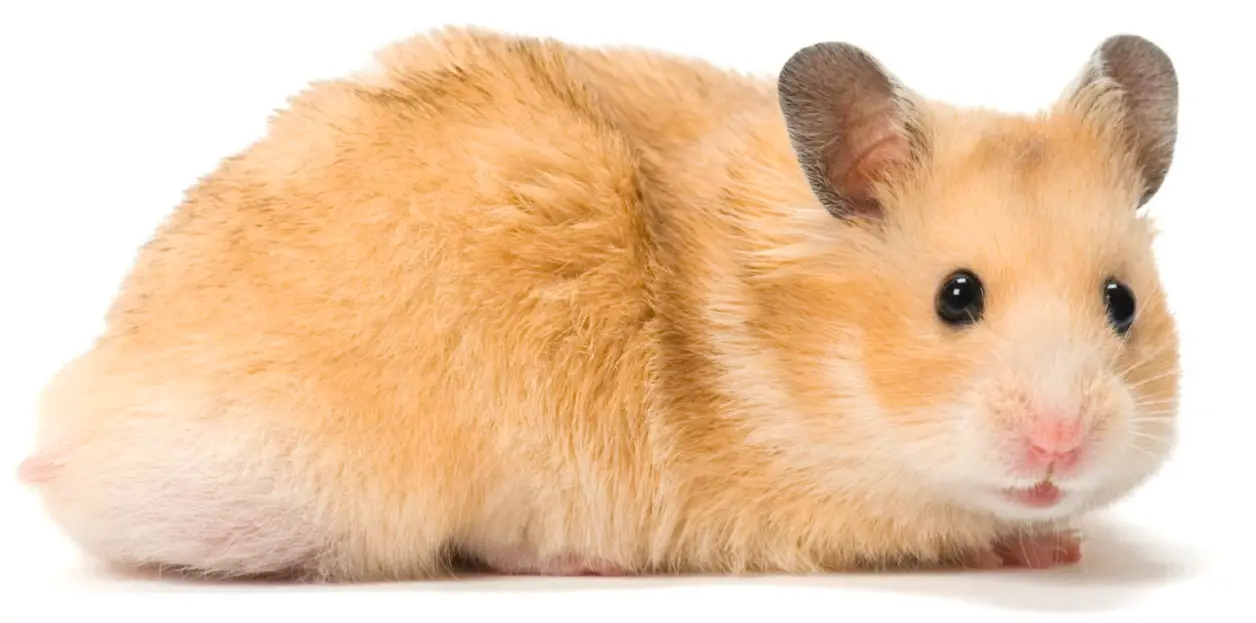
Syrian Hamster Characteristics
After the wild European hamsters, “mister saddlebags” or Syrian hamsters are the largest of all pet hamster species, growing to over 8 to 9 inches in size and weighing around 150g (5 ounces) in captivity, with females often wider than males.
Hamsters are known to have a relatively short lifespan and The average lifespan of a Syrian hamster is 2 to 3 years years. However, in captivity, they have been known to live up to 4 years.
Syrian hamsters (Mesocricetus Auratus); are usually golden in color, turning a little brown with a less dark belly, but, bred for much longer than the other species, Syrian hamsters have developed in captivity into many different types, patterns and coat colors:
Syrian hamster hair length
- Short-haired syrian hamster (fancy hamsters)
- Long-haired or teddy bear Syrian hamsters (Angora hamster), which come in either satin or non-satin, and the Syrian Rex hamsters, distinguished by their curly coat.
Syrian hamster Coat Patterns
- Roan hamsters
- Banded pattern
- Dominant Spot
- Tort
- Tort and white
Syrian hamsters Coat Colors
- The Golden hamster and Umbrous Golden hamster
- The Black-eyed Cream Syrian hamster and the Red Eyed Syrian hamster
- The Sable Syrian hamster
- The black Syrian hamster (Black bear syrian hamster)
- The Mink Syrian hamster
- The Cinnamon Syrian hamster
- The gray Syrian hamster
- The Chocolate Syrian hamster
- The Yellow Syrian hamster and the Yellow-Black Syrian hamster


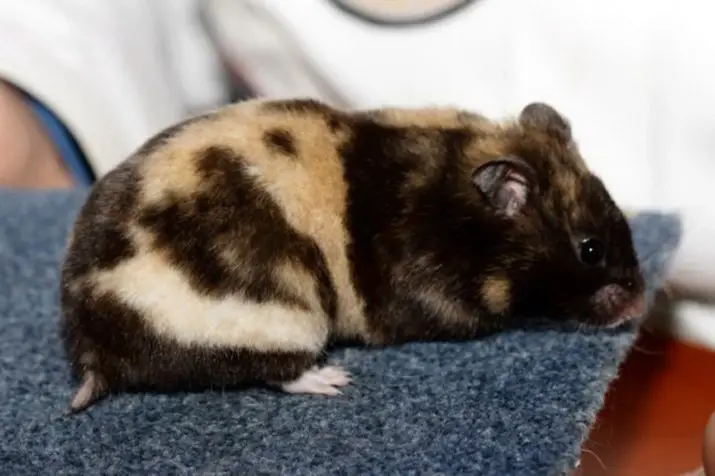
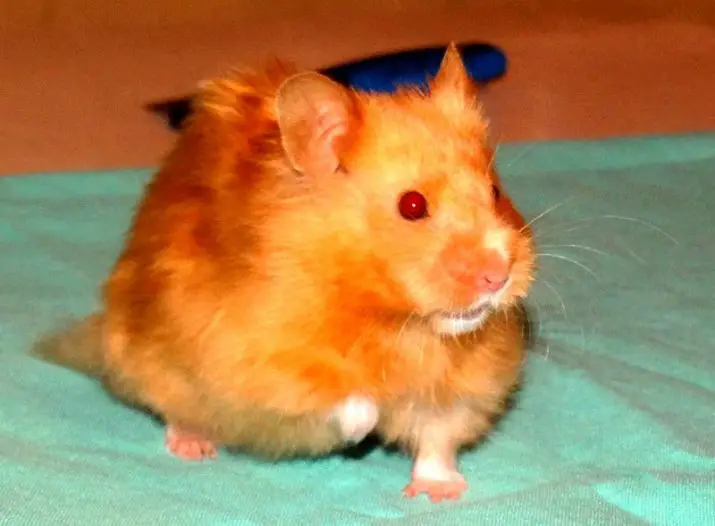
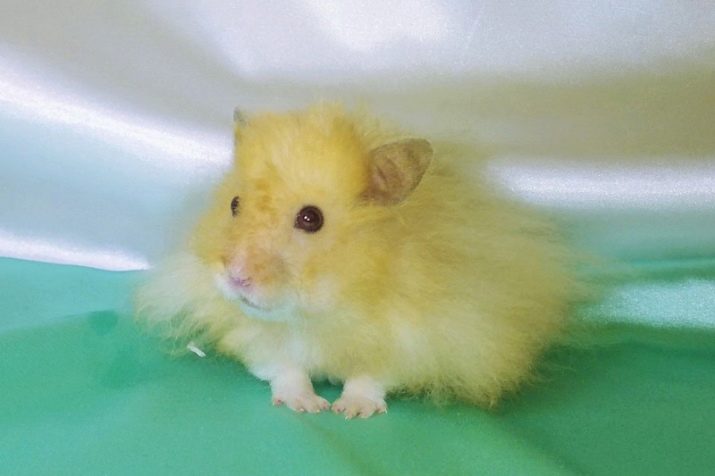

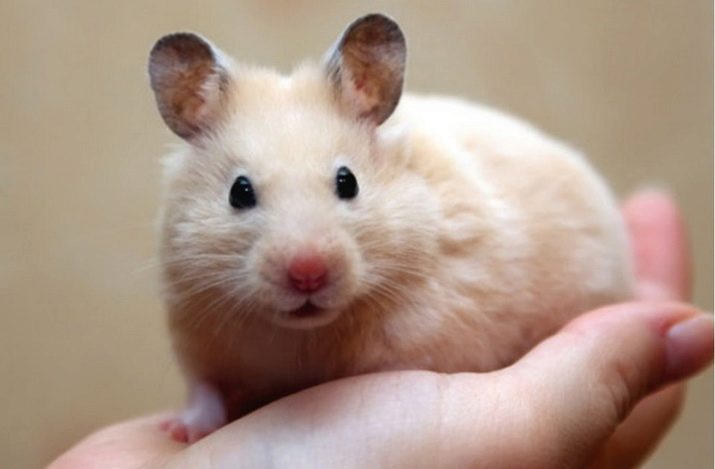
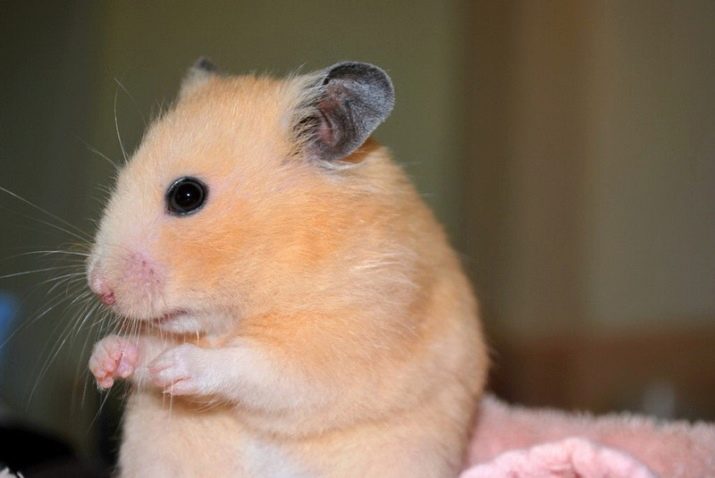


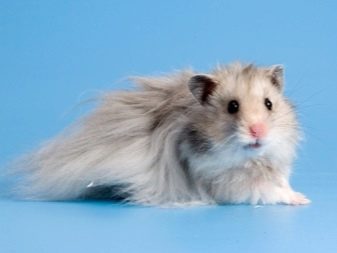

As you can see, there’s a wide variety of Syrian hamsters bred in captivity and each one has been given its name according to the color of its coat and its patterns.
Syrian hamsters Temperament and Behavior
Due to the scarcity of food, Syrian hamsters can be very solitary, territorial and aggressive towards each other in their natural environment.
As pets, Syrian hamsters must also be housed alone especially as adults, they’re known as the slowest of the popular pet hamsters, and the least likely to bite.
They are usually easy to tame and interact with, and are very active at night, when they are normally crepuscular in their natural habitat: Between 06.00AM and 08.00AM and 4.00PM and 7.30PM.
Also easy to handle, playful and very curious; Syrian hamsters are great pets for all ages, friendly and unlike Dwarfs hamsters; Syrians can remember their owner quite easily and remain tame even after several days of non-interaction with them.
The Golden hamster is also known for actively marking its territory, almost everything in its enclosure (males especially, by dragging its body over objects) including its borrows, with secretions from special scent glands (flank glands) on its hips.
Are Syrian hamsters good pets for kids ?
Syrian hamsters are docile, cute and easy to tame and to handle especially when they get used to you, but when it comes to hamsters in general, it is often recommended that the child be at least 6 years old and over and also be supervised by an adult to ensure that the hamsters’ needs are also met to avoid any health problems or aggressive behavior towards the child.
Housing a Syrian hamster
Contrary to what many “popular websites” unfortunately recommend, 450 square inch !!! which is completely ridiculous !!! Hamsters, especially Syrian hamsters, must be housed in an enclosure of at least 800 square inch of “continuous floor space“.
The best option will be a large glass tank. Give them as much space as you can, their special room would be the ideal solution, why not !!!!
If you really love your hamster, get him at least an Ikea Detolf, he needs floor space to satisfy his innate need to explore not forgetting that you’ll need space to place his big wheel, a margin sandbox, his food bowl, hides, enrichment …
The best exercise wheel for golden hamsters
You absolutely must get him a 12 inch (+30 cm) exercise wheel to avoid back problems, and make sure you choose a wheel that’s quiet and doesn’t have a rough surface (without mesh on the running surface) to avoid injuries to his paws and eventually sore or bumble feet.
A thick layer of bedding
Most Syrian hamster owners often wonder why their usually calm hamster has suddenly shown a behavior of wire-gnawing and a higher wheel activity. The reason is simple, your Syrian hamster is stressed and one of the main reasons is that it can’t find a way to satisfy its natural needs to burrow, create multiple entrances and feel safe…
Unlike most dwarf hamsters, such as Chinese hamsters, Campbell’s dwarf, Winter white hamsters or Roborovski hamsters that need only 10 to 12 inch thick bedding, Syrian hamsters need at more than 15 to 20 inch of bedding to build their tunnels, nesting chambers and food stashes.
Choose a bedding that is non-dusty, non-scented, non-toxic if eaten and especially bedding that can hold burrows and don’t collapse easily.
The ideal bedding for Syrian hamsters would be a mix of long-strand soft hay, paper-based bedding like Kaytee clean and cozy or Carefresh and something like Aspen or Spruce wood shavings as Niteangel shavings.
To know how much bedding you’re gonna need, just multiply the volume in cubic inches by 0.017 and you’ll know how much bedding in liters you’re going to buy.
Finally remember this: the deeper the bedding, the happier your hamster will be.
Syrian hamster Specific Needs
As well as providing all their other needs, including a lot of room and a healthy well-balanced homemade diet, plenty of chew toys and enrichment; Syrian hamsters tend to like to create a specific bond with their owners, so learn to interact with your hamster, learn its habits, try to understand its character to find out how and when best to interact with it.
A small piece of fruit is always a great way to make friends with your Syrian hamster.
Feeding a Syrian hamster
Syrian hamsters are omnivores and eat on average between one and two tablespoons of food every 24 hours. Half a spoonful in the morning, a few pieces of veggies during the day and one or two pieces of fruit a week just as a treat.
In addition to their seed mix (grains, seeds, nuts, dried herbs, etc.), which I recommend you create yourself, Hamsters love mealworms and crickets would be an excellent source of animal protein for your golden hamster.
Your hamster should always have two bowls, one for dry food (seed mix) and the other for veggies, as well as two bottles of Fresh water in its enclosure, in case one of them suddenly stops working.
If by misfortune you’re giving your hamster commercial food blend, the supplemental foods (treats,veggies) should be less than 10 or 15% of your Syrian hamster’s overall daily meal…
Always remember to remove any leftover fresh food and veggies that your hamster hasn’t finished eating, so that it doesn’t carry them away in its food stash.
During the warmer months, you can even add a heavy ceramic shallow dish for water to your hamster’s enclosure.
Syrian hamsters should also have access to at least 10 mg of Vitamin C a day, either in their regular food or as drops, as this will boost their immune system and their ability to cope with the stressful situations that are behind almost all their health problems.
Common Syrian hamsters Health Issues
Being nearly 5 times the size of dwarf hamsters, Syrian hamsters are often much tougher and more resistant to their usual health problems.
But you should always be on the lookout for signs of illness and stress in your Syrian hamster, so that you can treat any problems quickly before they become serious, especially in the case of wet tail.
Obesity is a common problem in Syrian hamsters due to poor diet and lack of exercise, particularly as many Syrian hamsters are housed in small cages that don’t give them the opportunity to expend their energy and relieve stress.
Long-haired hamsters can also get fur mites if you do not keep their enclosures clean.
Exercising your Syrian hamster
As I’ve said before, Syrian hamsters need a large exercise wheel and plenty of room to run around, but you can also create a play area just outside the enclosure, in a quiet spot away from direct sunlight and draughts, where you can place toys, an exercise ball, a bowl of water, something to chew on and a little food scattered here and there, he’ll love this space and it will help him avoid many of the illnesses associated with stress and obesity, including diabetes and heart failure.
Cleaning a Syrian hamster’s enclosure
The larger your Syrian hamster’s enclosure, the less often you’ll need to clean it: hamsters are not stinky !, they usually pee 3 to 5 times a day, and the total amount of urine rarely exceeds 10 ml; and if your hamster’s enclosure is large enough and the bedding thick enough, you’ll only need to do one daily spot cleaning, just picking up your hamster’s droppings and wet bedding from the cage, not forgetting to clean the sand from the sandbox with a small mesh sieve.
You can then just clean the cage and replace part of the bedding, once every 10 days in summer and twice a month in winter.
Hamsters don’t like people invading their enclosure, seeing it as a violation of their territory, so it’s best to deep clean your hamster’s enclosure when you place him in his playpen to avoid stressing him, and spot clean when he’s in his underground chambers.
Do Syrian hamsters need grooming?
Golden hamsters will clean themselves as long as they’re not sick. Just make sure their sandbox is clean, and if they have a stain on their fur that they can’t remove themselves, you can clean it with a small cloth, dampened and wrung out beforehand.
Teddy bear Syrian hamsters can sometimes have difficulty keeping their fur clean because of their long hair. You can help by taking a little sand and sprinkling it on their fur when they’re taking their sandbath.
If, on the other hand, your hamster is old or ill, you may need to help him clean up if you find he’s neglecting his hygiene.
Taming a Syrian Hamster
Syrian hamsters are easier to tame when they’re young, so just give them time to get used to their new enclosure, sit in front of their cage and let them study you, and they’ll soon get used to your presence.
You’ll then start offering him treats without taking him out of his cage, so that he gets used to eating from your hand.
You’ll then encourage him to climb into your hand to eat his treat, and finally start petting him with your other hand. Then consider taking him out of his cage and try the same taming process once you’re sitting on the floor, so as not to risk hurting your hamster if he decides to jump out of your hand.
Cost of keeping a Syrian hamster
The cost of owning a Syrian hamster and fitting out its enclosure could reach $250 if you want to do things properly.
You’ll then need to budget around $50 each month for food, replace some of their bedding, some enrichment and toys.
You’ll also need to plan at least one visit to the vet every 2 months, and put some money aside for contingencies.
Where to get a Syrian Hamster?
You can of course walk into any pet store and buy a Syrian hamster for less than $25, but I strongly recommend that you learn what to look for when choosing a pet hamster or just ask an exotic vet in your area or on specialized Facebook groups to direct you to an ethical and reputable breeder if you want to acquire a healthy Syrian hamster without predispositions to disease or bad temperament.
How to recognize a healthy hamster at the pet store?
- Choose a hamster with a shiny, clean coat and no signs of diarrhea (clean bottom).
- The hamster should also be dynamic and curious, not shy or timid.
- His eyes should be wide open and clean, and his nose should be dry.
- No Lumps or Bumps and no hair loss (no bold patches).
- Clean ears and healthy teeth.
- And finally, he should have no wounds, perhaps a sign of a behavioral problem.
Final thoughts
Syrian hamsters are low-maintenance pets, they can make good pets if you learn to take good care of them and look after their health and well-being.
Remember too that Syrian hamsters need a large enclosure and even a playpen if they want to get out of their cage, not forgetting a thick bedding layer to burrow and build their tunnel network, all of which will save them stress and trips to the vet, and above all will greatly increase their life expectancy.


